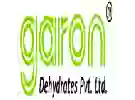
Château RobinGrand Vin AA 820
In the mouth this red wine is a powerful with a nice balance between acidity and tannins.
This wine generally goes well with beef, veal or pasta.
Taste structure of the Grand Vin AA 820 from the Château Robin
Light | Bold | |
Smooth | Tannic | |
Dry | Sweet | |
Soft | Acidic |
In the mouth the Grand Vin AA 820 of Château Robin in the region of Languedoc-Roussillon is a powerful with a nice balance between acidity and tannins.
Food and wine pairings with Grand Vin AA 820
Pairings that work perfectly with Grand Vin AA 820
Original food and wine pairings with Grand Vin AA 820
The Grand Vin AA 820 of Château Robin matches generally quite well with dishes of beef, pasta or veal such as recipes of burger roll, capellini with vegetables or sauté of veal with tomato.
Details and technical informations about Château Robin's Grand Vin AA 820.
Discover the grape variety: Voskeat (e)
Armenia, where it is grown both as a table grape and as a wine grape - Synonyms: voskehat, voskath, khardji, xardji (for all the synonyms of the grape varieties, click here!)
Informations about the Château Robin
The Château Robin is one of of the world's greatest estates. It offers 3 wines for sale in the of Languedoc to come and discover on site or to buy online.
The wine region of Languedoc
Languedoc (formerly Coteaux du Languedoc) is a key appellation used in the Languedoc-Roussillon wine region of southern France. It covers Dry table wines of all three colors (red, white and rosé) from the entire region, but leaves Sweet and Sparkling wines to other more specialized appellations. About 75% of all Languedoc wines are red, with the remaining 25% split roughly down the middle between whites and rosés. The appellation covers most of the Languedoc region and almost a third of all the vineyards in France.
The wine region of Languedoc-Roussillon
Languedoc (formerly Coteaux du Languedoc) is a key appellation used in the Languedoc-Roussillon wine region of southern France. It covers Dry table wines of all three colors (red, white and rosé) from the entire region, but leaves Sweet and Sparkling wines to other more specialized appellations. About 75% of all Languedoc wines are red, with the remaining 25% split roughly down the middle between whites and rosés. The appellation covers most of the Languedoc region and almost a third of all the vineyards in France.
The word of the wine: Maturation
Transformation undergone by the grape when it is enriched with sugar and loses some of its acidity to reach maturity.











